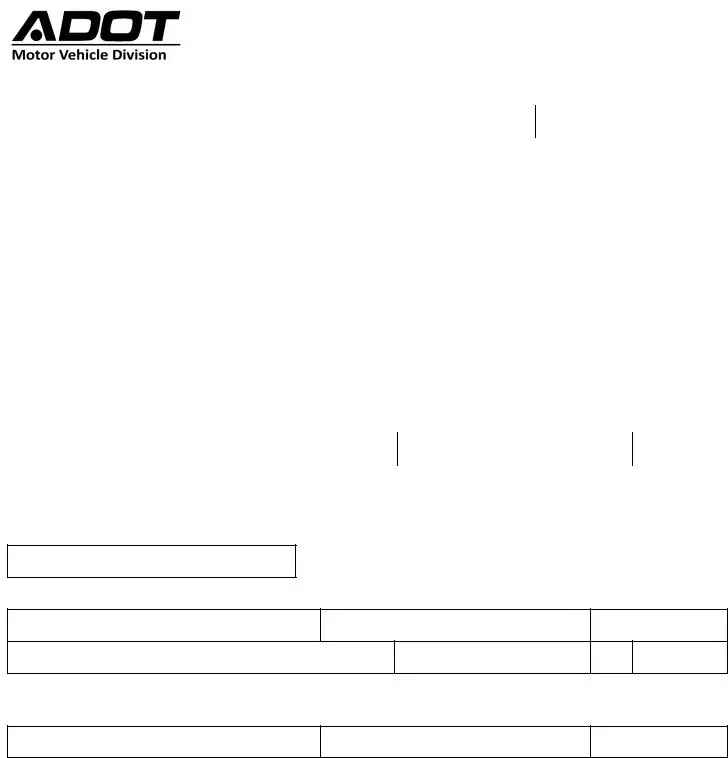The Vehicle Bill of Sale closely mirrors the Arizona Repossession Affidavit form in its core function—transferring ownership of a vehicle. It serves as a formal document between a buyer and a seller to record the sale of a vehicle, stipulating details such as the vehicle identification number (VIN), make, model, and the sale date, similar to the sections found in the Repossession Affidavit. What sets them apart, however, is the context in which they are used; while the Repossession Affidavit implies a legal seizure of the vehicle due to non-payment, a Bill of Sale signifies a mutual agreement of sale.
The Security Agreement is another document similar to the Arizona Repossession Affidavit. This legal document outlines the terms under which personal property is used as collateral for a loan. Like the Repossession Affidavit, it features details about the asset (in this case, a vehicle) and the involved parties. The distinct similarity lies in the identification of the lienholder and the establishment of the lienholder's rights over the property, which is a foundational aspect of the repossession process when the borrower defaults.
A Mechanic's Lien shares commonalities with the Repossession Affidavit due to its focus on securing a lienholder’s interest in a vehicle due to unpaid debt, specifically for repair or maintenance work done on the vehicle. Both documents formalize a lienholder's right to possess or sell the vehicle to recover owed funds. However, while the Repossession Affidavit is utilized following loan default, a Mechanic's Lien is more specific to the auto repair industry.
The Title Application form, essential for establishing or transferring vehicle ownership in most jurisdictions, has similarities with the repossession affidavit, particularly in the details it gathers about the vehicle and its owners. Both require comprehensive vehicle information and owner details to ensure legal compliance and record-keeping. However, the Title Application is broader, often used in a variety of ownership transitions, not limited to repossession scenarios.
Odometer Disclosure Statements are crucial in the sale and transfer of vehicles, much like parts of the Arizona Repossession Affidavit. They ensure transparency in the transaction by certifying the vehicle’s mileage at the time of sale, protecting buyers from potential fraud. While the focus of the Odometer Disclosure is narrower, concentrating solely on the vehicle's mileage, it is a critical element of honest dealings, just as accurate vehicle descriptions are essential in repossession affidavits.
A Conditional Release Form bears similarities to the repossession affidavit, particularly in its function to release parties from certain conditions upon fulfillment of specific criteria. In the context of the Repossession Affidavit, the document might act as a conditional release for the original owner, relinquishing claims to the vehicle once the repossession process is completed under predefined legal terms. This form typically comes into play in various scenarios where conditional agreements are made.
The UCC-1 Financing Statement is a legal document filed to give public notice that there is a right to take possession of and sell certain assets for repayment of a specific debt. This is quite similar to the reposession affidavit's declaration of lien on a vehicle due to default. Both serve to protect the creditor's interest, though the UCC-1 is broader, applicable to various asset types beyond vehicles and used in a wider range of financial transactions.
The Notice of Default and Intent to Sell, which creditors use to inform a debtor about the pending repossession and sale of the property, has clear parallels with the Arizona Repossession Affidavit. This notice is a precursor to the action detailed in the affidavit, setting the stage by officially informing the debtor of their default and the consequences, including a detailed account of the involved property and the amounts due.
A Power of Attorney (POA) for Vehicle Transactions shares certain functionalities with the Arizona Repossession Affidavit, especially in representing the interests of one party in managing the affairs related to a vehicle. Whereas the Repossession Affidavit facilitates the lienholder's legal seizure and potential sale of the vehicle, a POA might be used to grant another person the authority to handle various vehicle-related tasks, including sale, on behalf of the owner. The connection lies in the delegation of rights concerning the vehicle, albeit for different purposes.
